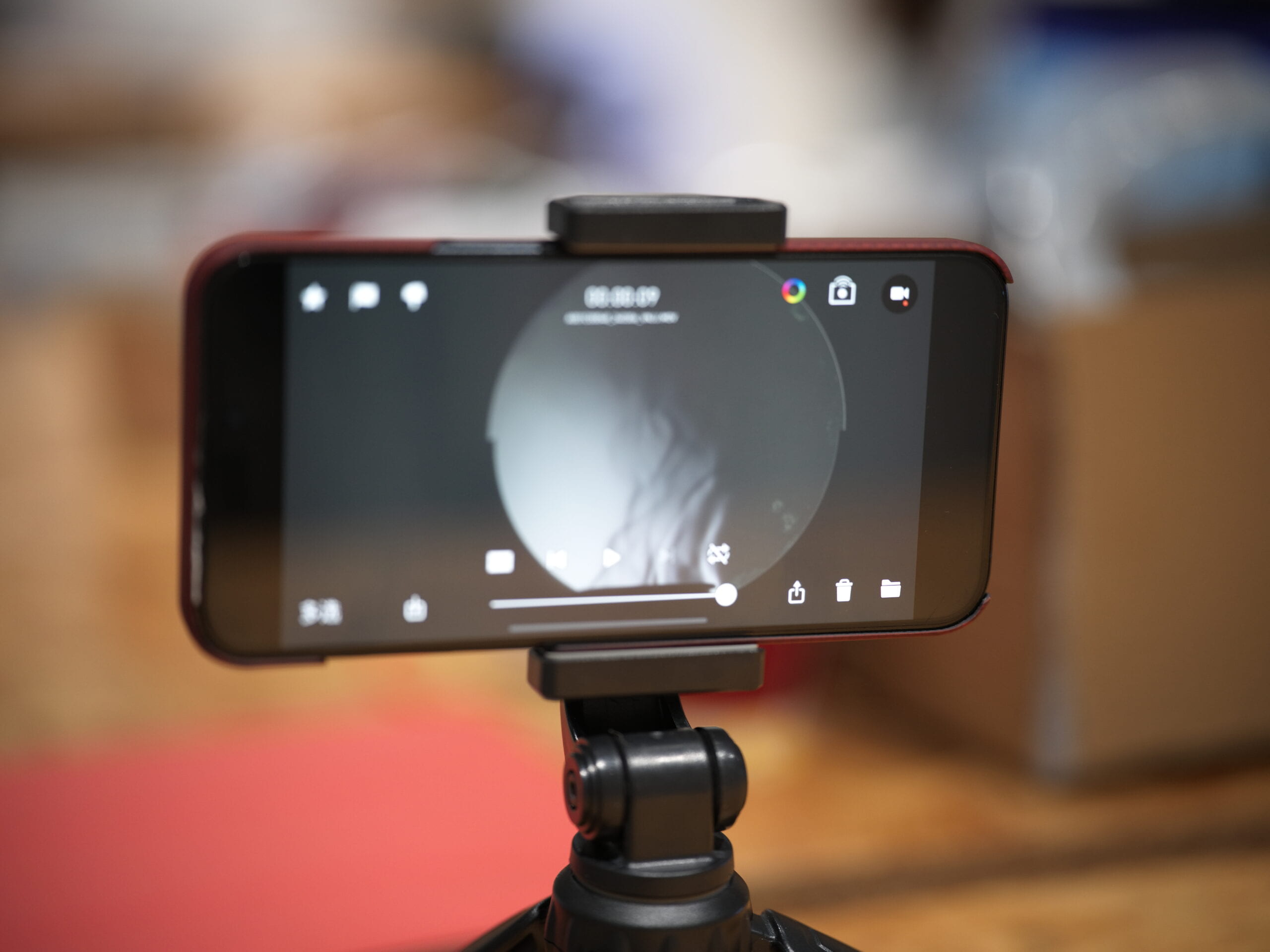Project 1: Invisible Currents – Visualizing Airflow
I. Project Description / Introduction
The “Invisible Currents” project is an innovative exploration at the intersection of art, science, and technology. At its core, this project harnesses a 3D-printed shelf and a concave mirror to reflect and focus light from a cell phone’s flash into its lens. The magic happens when this setup is directed towards a heat-emitting object like a flame or hot water. The mirror captures the subtle air currents rising from these heat sources, creating a visual representation of the invisible airflow. This concept was inspired by the intrigue of visualizing the unseen and the challenge of integrating everyday technology with simple scientific principles to create something extraordinary.
II. Perspective and Context
In the realm of art and perception, “Invisible Currents” resonates profoundly with Robert Irwin’s notions of experiential perception and Merleau-Ponty’s philosophy on the embodiment of space. Irwin’s emphasis on art that provokes a heightened awareness of one’s sensory experience is embodied in this project’s ability to make visible the ordinarily invisible aspects of our environment. Similarly, the project aligns with Merleau-Ponty’s views on the intertwining of perception and environment, as it encourages a deeper contemplation of the unseen forces that constantly interact with us. The project is not just a technical display but a portal to a more profound sensory and perceptual understanding, as discussed in our first week.
III. Development & Technical Implementation
The development of “Invisible Currents” was a journey of experimentation and discovery. The process began with researching the properties of light and reflection. The concept then evolved into using a 3D-printed shelf, tailored to adjust the tilt angle of a concave mirror precisely. The critical element was aligning the mirror to reflect light from a phone’s flash back into its lens, forming a focused beam. When a heat source was introduced, the heat’s effect on air density became visible through the distortion of the light beam. This interplay of components creates a simple yet effective visualization tool. The interactive nature of the project invites users to experiment with different heat sources and observe the varying airflow patterns.

IV. Presentation
During the class presentation, “Invisible Currents” evoked curiosity and engagement. Observers were fascinated by how everyday objects could reveal hidden aspects of our environment. The most successful part was the interactive element, allowing participants to manipulate the heat sources and observe different airflow patterns. However, some challenges included ensuring optimal lighting conditions for the best visual effect. The unexpected part was the variety of interpretations and discussions it sparked about the unseen forces around us and their implications in our daily lives.

V. Conclusion
Reflecting on “Invisible Currents,” the project was both a learning journey and a testament to creative problem-solving. It highlighted the importance of iterative design and experimentation. Successes included the effective visualization of airflow and creating an engaging, interactive experience. Challenges faced were primarily in fine-tuning the technical aspects for consistent results. The project opened new avenues for exploration, like integrating more advanced optical components or exploring different environmental phenomena. In the future, expanding this concept could lead to educational tools or interactive art installations, pushing the boundaries of how we perceive and interact with the unseen world around us.

